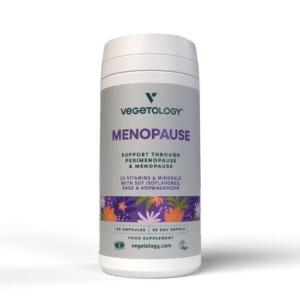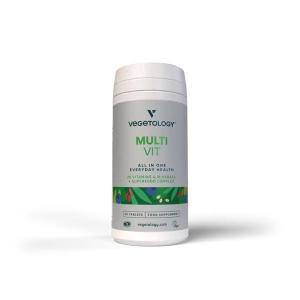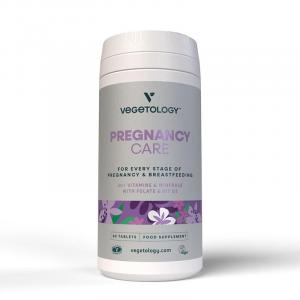
Where is dextrose hidden and how to find it on food labels

Dextrose. A word you might hear in relation to sports nutrition, on food labels, or in the composition of energy drinks. But what exactly is dextrose and what role does it play in our diet? Is it just another name for sugar, or does it have unique properties? The answers aren't as straightforward as they might seem.
What is dextrose and where does it come from?
Dextrose is a simple sugar, chemically known as D-glucose. It is a form of glucose, the most common monosaccharide, naturally found in fruits, vegetables, and honey. In the food industry, dextrose is often produced by starch hydrolysis, usually corn, which is why it's also referred to as corn glucose.
Unlike table sugar (sucrose), which is a disaccharide composed of glucose and fructose, dextrose consists solely of glucose molecules. This means it is absorbed very quickly by the body and provides an immediate source of energy. This property makes it a popular ingredient in foods designed for athletes and patients with low blood sugar levels.
Interestingly, dextrose differs from regular glucose primarily due to its original crystalline form and the direction in which it rotates polarized light – hence the name "dextrose," derived from the Latin "dexter" (right).
Why is dextrose used in foods?
Dextrose serves several functions in food. Apart from being a quick source of energy, it has technological advantages. Its ability to bind water and improve texture makes it a common component in bakery products, cookies, or instant mixes. It also acts as a natural preservative by reducing water activity and thus preventing microorganism growth.
Another benefit is its sweet taste – though not as sweet as sucrose, it still adds a pleasant sweetness to foods. Combined with other sugars, it can enhance flavor and affect color through participation in the Maillard reaction, which creates a golden-brown crust on baked goods.
An example can be instant oatmeal, where the manufacturer adds dextrose: not only does it increase its energy value, but it also ensures the oatmeal has a smoother texture and sweeter taste without the need to add more regular sugar.
Is dextrose healthy, or should we avoid it?
This question doesn't have a black-and-white answer. As with other sugars, it depends on the amount and context. Dextrose itself is not harmful – after all, it's a basic form of sugar that the body naturally uses as fuel. The brain, red blood cells, and muscles are literally dependent on glucose.
The problem arises if we consume too much or at the wrong time. Due to its rapid effect, dextrose can cause a sharp rise in blood sugar levels (glycemia), followed by a rapid drop. This can lead to fatigue, irritability, or even hypoglycemia – especially in people with impaired insulin regulation.
On the other hand, for athletes who need to quickly replenish energy after intense performance, dextrose is an ideal choice. It is commonly found in electrolyte drinks, energy gels, or recovery shakes. In these cases, it is justified and can contribute to the body's quick recovery.
An example from everyday life could be a situation at a marathon. A runner who takes a gel containing dextrose during the race will experience an almost immediate energy boost, while the body of other competitors relying only on slower-absorbing carbohydrates may start to slow down.
Dextrose vs. other sugars
People often confuse terms like glucose, fructose, sucrose, and dextrose. A clear comparison can help clarify where these substances differ:
- Dextrose (glucose) – a rapidly absorbable sugar, a direct source of energy. It has medium sweetness and a high glycemic index.
- Fructose – a sugar naturally found in fruit. It has high sweetness but a lower glycemic index than glucose. It is metabolized in the liver.
- Sucrose – common table sugar, composed of half glucose and half fructose.
- Lactose – milk sugar composed of glucose and galactose.
From a nutritional standpoint, it's important to distinguish not just the amount of sugars in the diet but also their types. Dextrose can be useful in certain situations, but in excess – just like other simple sugars – it contributes to weight gain, insulin resistance, and other metabolic complications.
Where can we find dextrose?
Dextrose is a substance that happily hides in a wide range of foods and products without us even realizing it. We often encounter it in processed foods, where it plays several roles – not only serving as a sweetener but also helping maintain the product's proper consistency or extending its shelf life. However, it's not just about sweetening.
Dextrose is added where manufacturers need to achieve certain technological properties, so it sometimes ends up where we wouldn't expect it. We commonly find it on supermarket shelves, even if the consumer has no idea – it's part of the composition of non-alcoholic drinks or cereal bars, where its presence ensures stable taste and structure.
And that's not all. Dextrose plays its hidden role in many other products – such as instant soups, sausages, or various baked goods, where it can help the dough rise or create a nice golden crust. It is often found in foods intended for children, such as various purees, or in products where we don't expect the presence of sugar – such as in medical solutions, like glucose infusions. Even though it's not talked about much, dextrose remains an inconspicuous helper in the food and pharmaceutical industry, stealthily infiltrating our everyday products. It's one of those things that are "everywhere and nowhere," and once we learn to read labels, we'll start seeing it almost everywhere.
Occasionally, dextrose is also part of pharmaceutical preparations, where it facilitates the absorption of active ingredients or serves as a carrier. In some cases, it is also used in the production of vegan products – for example, as a honey substitute in cookies.
Given that it is cheap and readily available, it is among the most commonly used food ingredients.
How to identify dextrose on a label?
If you're watching your intake of simple sugars, it will be useful to know that dextrose doesn't always appear on packaging under the same name. It often hides behind terms like glucose, D-glucose, corn glucose, or simply grape sugar – so when reading labels, be on the lookout.
In some cases, it may appear as part of a more complex name, such as "glucose syrup." However, this contains a mix of different sugars, not just dextrose.
According to EU regulations, all allergenic ingredients and added sugars must be clearly and understandably stated on food packaging. Still, it's wise to read labels carefully because the total sugar amount may be hidden in several different components.
Does dextrose have a place in sustainable and healthy diets?
At a time when interest in healthy eating and sustainable living is growing, even common ingredients come under scrutiny. Dextrose, as an isolated sugar from industrial production, is not environmentally problematic in itself, but its excessive use in processed foods can lead to the consumption of lower-quality foods.
Alternatives can be natural sources of glucose – such as fruits, sweet potatoes, or oats. These provide not only sugars but also fiber, vitamins, and minerals. In the context of sustainable nutrition, it is ideal to focus on whole foods and processed products with minimal added sugar.
Try our natural products
Nutrition therapist Linda Košťálová's quote captures it aptly: “Sugar itself is not the enemy – the problem is when it becomes the main component of our diet.”
And that is precisely why it pays to know what dextrose is and in what form it enters our bodies. Not to avoid it entirely, but to handle it consciously – just like other components of our diet.




